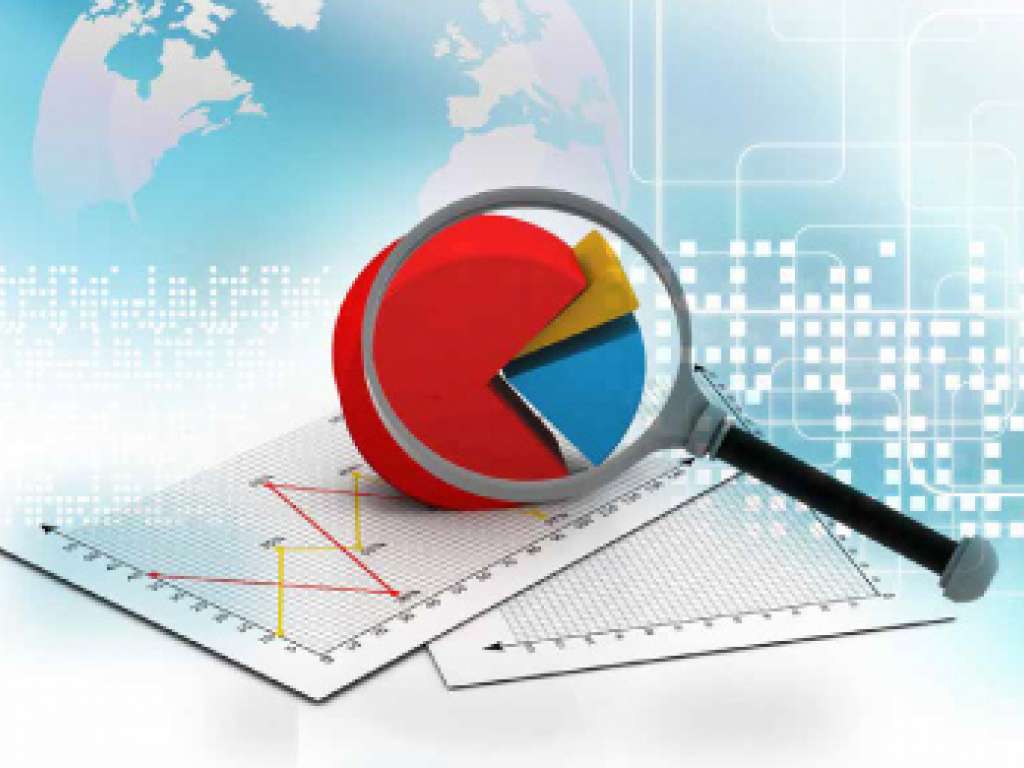Feature
Big Data Analytics: Game Changer in Retail Industry
Volume 2 Issue 1 June 2018 : By Dr Vinod Sople

The most cited definition of Big Data by Gartner is; “Big Data is high-volume, high-velocity and /or high-variety information assets that demand cost-effective, innovative form of information processing that enable enhanced insight, decision making, and process automation”. Big companies to satisfy their customers make use of business/customer data collected through the varied technology tools, equipment and solutions. In quest to satisfy customers global retail giants are, therefore, constantly on their toes in a bid to satisfy the whims and fancies of consumers by using data they have collected at POS (point of sales).
Big Data is today considered as an end-all solution to supply chain problems but using data to solve the business issues has proven more elusive than collecting, as some body said that “Big data has arrived, but big insights have not”.
In retail industry volumes of data in variety is produced every second in all areas of operations. The big data today is creating both opportunities are challenges in retail industry to use it in a meaningful way to gain competitive advantage and business sustainability. The big data analytics solutions have been playing a critical role in helping retailers bring about the said changes. The adoption of analytics solutions is, therefore, growing steadily with more retailers working incessantly toward enhancing supply chain operations, improving marketing campaigns, and increasing customer satisfaction and retention to achieve success in retail business. The retailers are using data analytics for increasing sales per visit of customer after understanding his/her purchase pattern, know the sales opportunity after analysing unexpected changes from social media and improve upon inventory management (availability and leanness) in the system. Hence, channelizing and managing data with the aim of working in favour of the customer as well as generating profits in retail business is very significant for survival.
Data analytics is applied these days at all stages of the retail process – taking track of popular products that are emerging, doing forecasts of sales and future demand via predictive simulation, optimizing placements of products and offers through mapping of customers and many others. With this, identifying customers, who would likely be interested in certain products depending on their past purchases, finding the most suitable way to handle them via targeted marketing strategies and then coming up with what to sell next is what data analytics deals with. The area wherein data analytics is playing crucial role in retail sector are:
Pricing - Algorithms perform several functions like tracking demand, inventory levels and activities of competitors, and respond automatically to market challenges in real time, which make actions to be taken depending on insights safe manner helping to price optimization to determine when prices are to be dropped.
Performance prediction - This is carried out by marketers who compare the performance of the test group to performance of a well-matched control group. Thus, businesses can take the advantage of data analytics retail without spending too much to avoid hurting their finances.
Demand Forecasting: It involves gathering seasonal, demographical, occasions led data and economic indicators to create a good image of purchase behaviour across target market. This is very good for inventory management.
Identify ROI Opportunities: Retailers use data-driven intelligence and predictive risk filters after having a good understanding of their potential and existing customer base, for designing expected responses for marketing campaigns, depending on how they are measured by a probability to buy or likely buy.
Forecasting trends: Algorithms that forecast trends go via the data on past buying pattern to analyse what needs to be promoted by marketing departments and what is not needed to be promoted.
Identifying customers: This is also important in data analytics retail because choosing which customers would likely desire a certain product, data analytics is the best way to go about it.
Effectiveness of ‘discount’ schemes: Retailers can run analysis on historical data and utilize it in predicting the impact discounts offers would have on actual sales and plan for the offers in future discounting the less profitable deals.
Product Sales: Many company’s business model depends on big analytics for customer identification and selling particular product category to him. With customers’ personal data, the marketers can match them with the most suitable product depending on the location and rating of their customers. Customers, therefore because of such personalized experience, would prefer to take advantage of personalized offers against offers by competitors.
Big Data Analytics can create multiple opportunities in marketing, customer experience, merchandising, campaign and loyalty program designs:
•Online behavioural analysis and web analytics that create tailored offers.
•Personalized and location-based offers on mobile devices.
•Target campaigns on segmented consumers and supply through right channels to achieve ROI.
· Real-time pricing.
•Run multi-level reward programs based on personalized recommendations
•For market insights perform sentiment analysis of social media, product reviews, call centre record.
•Predictive analytics for customer experience enhancement on all devices and channels.
•Detailed market basket analysis that yields more rapid growth in revenue.
•Identifying shopping trends and cross-selling opportunities with the aid of video data analysis.
•Predict profits using data on seasonal trends, economic forecasts, traffic and weather reports.
The main aim of Big Data Analytics is a streamlined and seamless experience for everyone involved from when the product leaves the manufacturer, to the store floor or warehouse, to product being purchased. Here, the retailer wants maximum efficiency in all departments.
The retail industry has gone through a lot of operational changes over the years due to data analytics. Therefore, the adoption of big data analytics solutions is growing rapidly making more retailers work tirelessly to enhance supply chain operations, improve on marketing campaigns and raise the satisfaction of customer as well as achieves a high success rate in retailing.
However, on safer side, factors such as security, privacy, liability policies and intellectual property must be stringent when talking about analytics. Analytics and big data are inter-related and therefore professionals who are specially trained would need to be included in the team so as to functionalize and utilize big data analytics. Also, companies would find it pertinent to incorporate information from various sources of data, mainly from third parties, and aid such environment by deploying efficient data. Finally, companies often make the mistake of falling in short-sightedness, making them fail in implementing the insights gotten from analytics.
With the lucrative returns. the data analytics delivers in the retail industry, most retailers will continue to utilize solutions so as to increase customer loyalty and boost the perception of their brand. Data analytics in retail space allows organizations gather information on their customers, how to reach them and how they can use their needs to impact sales. As technology continues to dominate retail industry, one thing is certain – data analytics is here to stay! Some examples of Big Data Analytics success are:
Walmart: Walmart has a broad big data ecosystem. The big data ecosystem at Walmart processes multiple Terabytes of new data and petabytes of historical data every day. The analysis covers millions of products and 100’s millions of customers from various sources. The analytics systems at Walmart analyse close to 100 million keywords on daily basis to optimize the bidding of each keyword. The main objective of leveraging big data at Walmart is to optimize the shopping experience for customers when they are in a Walmart store, or browsing the Walmart website or browsing through mobile devices when they are in motion. Big data solutions at Walmart are developed with the intent of redesigning global websites.
TESCO: Tesco is the UK’s largest food retailer and has long been a pioneer, when it comes to technology and data. It was one of the first supermarket chains to begin tracking customer activity through its loyalty card system and has successfully managed the transition to online retailing. Tesco is in the process of moving to a data lake model, based around the Hadoop framework. This centralized, cloud-based repository for all its data, codified in a way to make it accessible and useable by any arm of the operation, as and when it is needed. They are focusing on Teradata and Hadoop in their ecosystem to get both of those working together and doing the right thing. Tesco has to deal with key challenges in the future which include, to gain a better understanding of the changing nature of consumer behaviour, creating efficiencies in their logistics and distribution chains, to keep down costs and minimize environmental impact, facing up to the challenge of emerging business models which compete with their own and reducing the amount of food which goes to waste at their stores.
Finally, one can conclusively say that retailing has reached to the platform for more disruption that is data-driven because data quality got from several sources such as social network conversations, internet purchases, location-specific interactions from smartphones have transformed into a new entity for transactions that are digital based. The benefits that organizations would reap from utilizing data analytics are mitigating business risks, improving performance and able to discover insights that may have been hidden.
Dr Vinod Sople is Dean-Research at ITM Group of Institution. He was associated with industry for twenty-two years and for last seventeen years he is in academics. His areas of research are Supply Chain and Logistics Management, Intellectual Property Rights, and Marketing Management. He authored seven books. He is Chief Editor of three international journals







